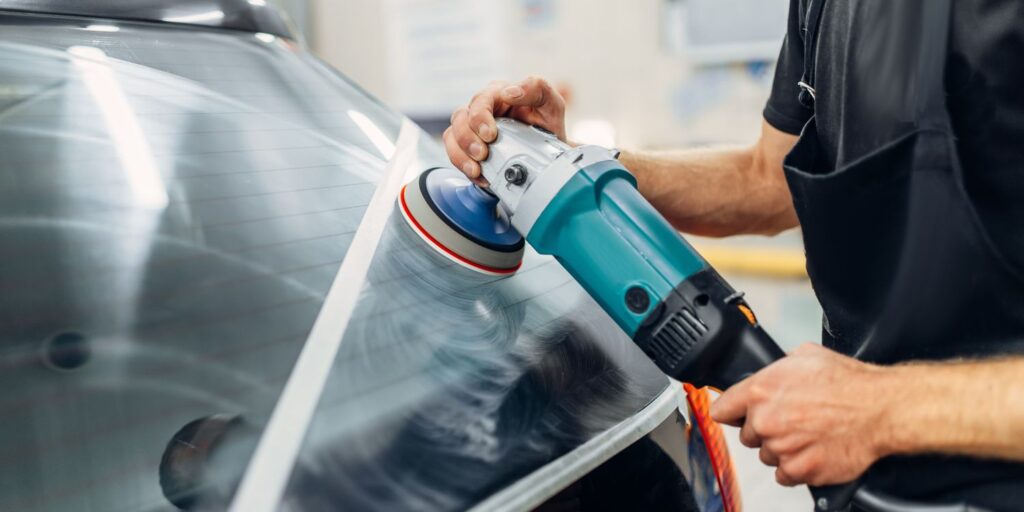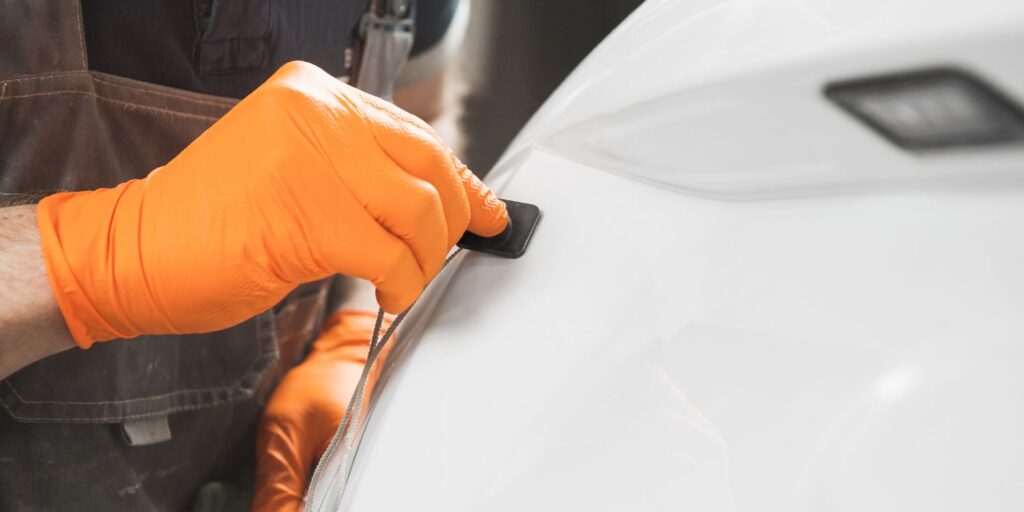Dealing with unsightly paint transfers on your beloved automobile can be a disheartening experience, whether they were caused by a minor collision or simply brushing against another vehicle.
However, fear not, for with the proper tools and techniques at your disposal, you can restore your car’s pristine finish to its former radiant glory.
Prepare to embark on a comprehensive guide that will equip you with the knowledge to effectively eradicate those unwanted paint stains, leaving your vehicle looking as pristine as the day you first acquired it.
First and foremost, it’s crucial to act swiftly when confronted with paint transfer. The longer the unwanted paint.
How to Remove Paint Transfer from Your Car
Sometimes, your car gets paint from other vehicles. You don’t need to pay someone to remove it. Follow some easy steps to fix paint transfer yourself and save money. First, identify the spot with new paint.
Next, use a clay bar to rub off as much as possible. Then, use a scratch remover to buff away remaining paint.
Finally, apply wax for protection. Using simple products and methods, you can remove paint transfer at home.
Understanding Paint Transfer
Paint transfer occurs when the paint from another object, such as another car or a stationary object, transfers onto your vehicle’s surface upon impact. It often leaves a noticeable mark that mars your car’s appearance.
However, most paint transfer incidents only affect the clear coat and can be fixed without repainting.
Materials Needed
Before you begin the process of removing paint transfer from your car, it’s essential to gather the following materials to ensure a smooth and effective restoration:
1- Car Wash Soap
Choose a high-quality car wash soap that effectively removes dirt and grime without damaging the paint.
2- Microfiber Towels
Opt for soft microfiber towels to avoid scratching the paint surface while cleaning and drying.
3- Clay Bar Kit
Invest in a clay bar kit that includes a clay bar lubricant and clay bar. This will help remove embedded contaminants from the paint surface.
4- Rubbing Compound
Select a rubbing compound suitable for automotive use to remove paint transfer marks effectively.
5- Polishing Compound
Choose a polishing compound to restore shine and smoothness to the paint surface after removing the paint transfer.
6- Car Wax
Use a high-quality car wax to protect the newly restored finish and provide long-lasting shine.
7- Applicator Pads
Use soft foam or microfiber applicator pads to apply rubbing compound, polishing compound, and wax evenly.
8- Water Hose or Bucket
Have a water hose or bucket on hand for rinsing and washing the affected area during the paint transfer removal process.
By ensuring you have all these materials ready before starting the process, you can efficiently tackle paint transfer and restore your car’s finish to its former glory.
Step-by-Step Guide to Removing Paint Transfer:
lets learn the step by step way :

1- Assessing the Damage
Start by inspecting the affected area to determine the extent of the paint transfer. Ensure there are no deep scratches or dents that require professional attention.
2- Washing the Affected Area
Clean the affected area with car wash soap and water to remove any dirt or debris. This ensures a clean surface for the next steps.
3- Using Clay Bar
Lubricate the surface with a clay bar lubricant, which is included in the kit. Then, gently rub the clay bar over the paint transfer marks to lift them off the surface. The clay bar will pick up contaminants without damaging the clear coat.
4- Applying Rubbing Compound
Apply a small amount of rubbing compound to a clean microfiber towel. Work the compound into the affected area using circular motions until the paint transfer marks disappear.
5- Polishing
Once the paint transfer is removed, use a polishing compound to restore the shine to the affected area. Apply the polish using a clean microfiber towel and buff the surface until it gleams.
6- Waxing
Finish the process by applying a layer of car wax to protect the newly restored finish. Use an applicator pad to spread the wax over the surface evenly, then buff it off with a clean microfiber towel for a smooth and glossy shine.
Read More about How To Get Mold Out of Car?
Alternative Methods
If you prefer not to use a rubbing compound or clay bar, there are alternative methods for removing paint transfer. These include using specialized paint transfer removers or DIY solutions like baking soda paste or nail polish remover.
However, exercise caution with these methods as they may be abrasive and could damage your car’s clear coat if not used correctly.

Precautions to Take
- Work in a shaded area to prevent the products from drying too quickly.
- Avoid applying excessive pressure when using rubbing compound or polishing compound to prevent further damage to the clear coat.
- Always test any new products or methods on a small, inconspicuous area before applying them to the entire affected area.
FAQS
Frequntly asked questions about How to Remove Paint Transfer from Your Car?
Can paint transfer be removed from any type of paint finish?
Yes, paint transfer can typically be removed from most paint finishes, including clear coats, with the appropriate tools and techniques.
Will removing paint transfer damage my car’s paint job?
No, when done correctly, removing paint transfer should not damage your car’s paint job.
How long does it take to remove paint transfer from a car?
The time varies depending on the severity, but it can typically be done within a few hours.
Can I prevent paint transfer in the future?
Yes, parking away from other vehicles and using protective measures like car bras can minimize the risk.
Is it worth fixing minor paint transfers myself, or should I seek professional help?
Minor paint transfer can often be fixed DIY, but if unsure or if the damage is extensive, consult a professional.
Can household products like rubbing alcohol remove paint transfer?
While rubbing alcohol can be effective, it’s essential to use it sparingly and test it first to avoid damage.
Will removing paint transfer affect my car’s resale value?
Addressing paint transfer positively impacts resale value, as buyers prefer well-maintained vehicles.
Can I use rubbing alcohol on any type of paint finish?
Rubbing alcohol can be used on most paint finishes, but test it first to ensure compatibility.
What alternative methods can I use to remove paint transfer?
Specialized removers or DIY solutions like baking soda paste can be effective, but use caution.
Should I wax my car after removing the paint transfer?
Yes, waxing protects the finish and enhances shine, providing added protection against future damage.
Final Thoughts
In conclusion, removing paint transfer from your car is a task that can be accomplished with relative ease, provided you have the right tools and follow the correct steps.
By addressing paint transfer promptly, you not only restore your car’s appearance but also prevent potential corrosion or further damage to the clear coat. It’s essential to remember that prevention is key to maintaining your car’s finish.
Avoiding situations where paint transfer is likely to occur, such as parking in crowded areas or brushing against other vehicles, can significantly reduce the risk of damage.
Additionally, regular washing and waxing of your car can provide an added layer of protection against paint transfer and other environmental contaminants.
While the steps outlined in this guide offer an effective method for removing paint transfer, it’s crucial to exercise caution and follow safety precautions.
Always work in a well-ventilated area, wear protective gear, and test any new products or methods on a small, inconspicuous area before applying them to the entire affected area.
By taking a proactive approach to car maintenance and addressing paint transfer promptly, you can ensure that your vehicle maintains its aesthetic appeal and value for years to come.
So, roll up your sleeves, gather your materials, and restore your car’s finish to its former glory today!




